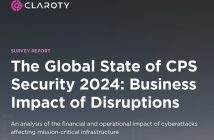
Only 54% of security professionals admit to having a written policy on length and randomness for keys for machine identities
Venafi® has released results of a study comparing security controls for human and machine identities. The study evaluated responses from over 1,500 IT security professionals from the U.S., U.K., France, Germany and Australia across a range of company sizes and industries.
People rely on usernames and passwords to identify themselves to machines so they can gain access to data and services. Machines also need to authenticate themselves to each other so they can communicate securely, relying on cryptographic keys and digital certificates, which serve as machine identities.
To better understand the gap between implementation of security controls for human identities and those for machine identities, Venafi sponsored a survey that evaluated similar security controls for each type of identity. For example, just half (54%) of organisations have a written policy on length and randomness for keys for machine identities, but 85% have a policy that governs password length for human identities.
Additional findings from the study include:
- Less than half (49%) of organisations audit the length and randomness of their keys, while 70% do so for passwords.
- Only 55% have a written policy stating how often certificates and private keys should be changed, while 79% have the equivalent policy for passwords.
- Only 42% of organisations automatically enforce the rotation of TLS certificates, compared with 79% that automatically enforce the rotation of passwords.
- Only 53% audit how often certificates and private keys should be changed, compared with 73% for passwords.
Organisations will spend over $10 billion protecting human identities this year, but they are just getting started with machine identity protection. However, the number of humans on enterprise networks remains relatively flat while the number of machines that need identities – including virtual machines, applications, algorithms, APIs and containers – is growing exponentially. Because cybercriminals understand the power of machine identities and their lack of protection, they target them for exploitation.
“Identities are widely recognised as a key element in the threat landscape,” said Kevin Bocek, vice president of security strategy and threat intelligence for Venafi. “Machine identities are a relatively new, and very effective, point of attack, but there is a huge gap between the security controls applied to human identities and those applied to machine identities. This is a problem because the future of digital business relies heavily on machines. Enterprises are seeing dramatic growth in container usage, artificial intelligence, microservices and IoT devices, as well as machines in cloud and virtualised environments. Everyone – from CISOs to security architects and security practitioners – must prioritise the protection of machine identities for their organizations’ digital transformation to be successful.”





